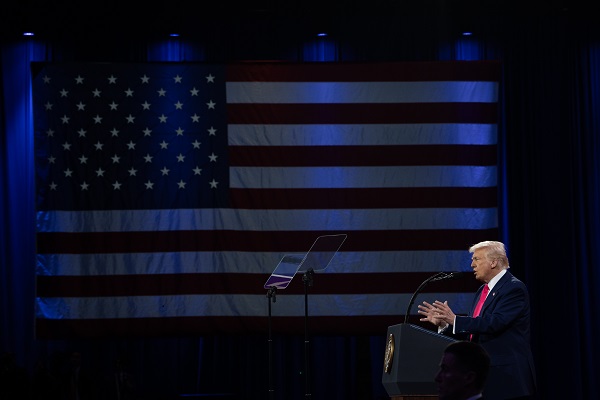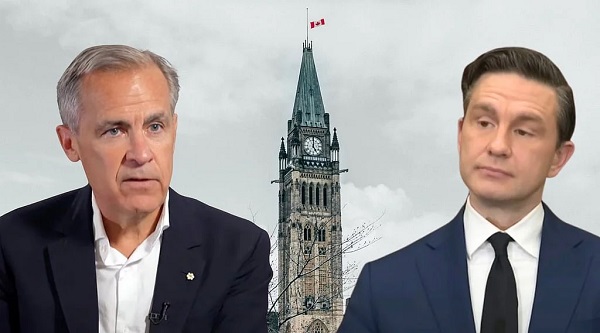Alberta
Vaccine mandate and province-wide restrictions
New vaccine requirements and COVID-19 measures in Alberta
Alberta has declared a state of public health emergency and will implement new health measures to expand capacity, increase vaccination rates and reduce transmission of COVID-19.
New temporary health measures to help slow the spread of COVID-19 will apply provincewide. This includes new restrictions on restaurants, indoor gatherings, weddings and funerals, retail, entertainment venues, and indoor sport and fitness beginning Sept. 20. Measures in workplaces, indoor private gatherings, places of worship, schools and children’s activities, as well as mandatory masking and physical distancing in all indoor public spaces begin Sept. 16.
Starting Sept. 20, businesses or event organizers who choose to implement a program checking patrons for government-issued proof of vaccination or a recent negative privately purchased COVID-19 test will be able to have an exemption to restrictions. If a business or service chooses not to require proof of vaccination, they will be required to adhere to the new health measures.
“We are taking necessary and critical steps to prevent our health system from being overwhelmed and once again slow the spread of COVID-19 in Alberta. These steps are not easy for anyone, but with COVID-19 hospitalizations continuing to rise, particularly amongst the unvaccinated, we have no choice but to implement the proof of vaccination measures and temporary restrictions. We have overcome past COVID-19 waves and we will once again. I strongly urge anyone who has not yet been vaccinated to do so immediately. Please protect yourself, your loved ones and your community.”
“The new proof of vaccination requirements will make us all safer. This will help increase vaccination rates across the province and protect Albertans in settings that pose a higher risk of transmission. We’ve seen from other jurisdictions that proof of vaccinations do help encourage people to get vaccinated, and I am calling on every eligible Albertan to get fully immunized as soon as possible.”
“I know Albertans, especially those who have done everything they can to keep not only themselves but their fellow Albertans safe, are tired. But I’m asking you to please continue to do the right thing to help protect our health-care system and our communities. Please continue to make safe choices, get vaccinated if you haven’t already, wash hands and stay home when ill. Together, we will protect our health system and each other.”
New public health measures provincewide
The following measures will take effect on Sept. 16:
Workplaces:
- Mandatory work-from-home measures are in place unless the employer has determined a physical presence is required for operational effectiveness.
Private social gatherings:
- Indoor private gatherings for vaccine-eligible, fully vaccinated individuals are limited to a single household plus one other household to a maximum of 10 people, with no restrictions on children under the age of 12.
- Attendance at any indoor private social gathering is not permitted for vaccine-eligible individuals who are unvaccinated.
- Outdoor private social gatherings are permitted to a maximum of 200 people, with two-metre physical distancing maintained at all times.
Places of worship:
- Places of worship must limit attendance to one-third fire code capacity.
- Face masks will be mandatory and there must be two-metre physical distancing between households or two close contacts for those living alone.
Outdoor events and facilities with no indoor portion (excluding washrooms):
- No attendance restrictions, however two-metre physical distancing must be in place.
Schools (K-12):
- Mandatory masking for students in grades 4 and up, plus staff and teachers in all grades. Schools that can implement an alternate COVID safety plan can be exempted from mandatory masking.
- Elementary schools are to implement class cohorting.
- For physical activities in schools:
- Youth aged 18 and under are not required to mask or maintain two-metre distance when engaged in physical activity.
- There are no restrictions on outdoor activities.
- Indoor sports/performance/recreation/
special interests are permitted with requirements for two-metre physical distancing, where possible.
Children’s sport/performance/recreation (extracurricular sports, performance, recreation and special interest):
- Indoor activities are permitted, with requirements for two-metre physical distancing and masking where possible, and symptom screening for participants.
- Youth aged 18 and under are not required to mask or maintain physical distancing during a physical activity, such as a team sport.
- Spectator attendance is limited to one-third fire code capacity. Attendees must be masked and ensure physical distancing between different households or an individual who lives alone and their two close contacts.
- There are no restrictions on outdoor activities.
Children’s activities:
- Children’s day camps must have two-metre physical distancing between participants and masking indoors.
- Children’s overnight camps must follow cohort models.
The following measures will take effect on Sept. 20:
Restaurants:
- Outdoor dining only with a maximum of six individuals per table (one household or two close contacts for those living alone).
- Liquor sales and consumption restrictions (10 p.m. sales and 11 p.m. consumption) apply.
- Restaurants are eligible to implement the Restrictions Exemption Program.
Weddings and funerals:
- All indoor ceremonies and services are limited to 50 attendees or 50 per cent fire code capacity, whichever is less.
- No indoor receptions are permitted.
- The hosting facility would be eligible to implement the Restrictions Exemption Program.
- All outdoor ceremonies and services for weddings and funerals must be limited to 200 attendees. Outdoor receptions are required to follow liquor sales and consumption restrictions (i.e., sales end at 10 p.m. and consumption ends by 11 p.m.).
- The hosting facility would be eligible to implement the Restrictions Exemption Program.
Retail, entertainment and recreation facilities (includes any indoor venues, libraries, conferences, rental spaces, concerts, nightclubs, casinos and similar):
- Attendance is limited to one-third fire code capacity and attendees are only permitted to attend with their household or two close contacts for those living alone. Attendees must be masked and have two-metre physical distancing between households.
- These facilities are eligible to implement the Restrictions Exemption Program.
Adult (over 18 years old) sport, fitness, performance, and recreation:
- Indoor activities:
- No indoor group classes or activities are permitted.
- One-on-one training or individual workouts are permitted but three-metre physical distancing is required.
- No contact between players; indoor competitions are paused except where vaccine exemptions have been granted.
- These facilities and programs are eligible to implement the Restrictions Exemption Program. Specific exemptions may also be granted on a case-by-case basis.
- There are no restrictions on outdoor activities.
Restrictions Exemption Program
- Starting Sept. 20, vaccine-eligible individuals will be required to provide government-issued proof of immunization or a negative privately paid COVID-19 test from within the previous 72 hours to access a variety of participating social, recreational and discretionary events and businesses throughout the province.
- To enter certain spaces that are participating in the program, including restaurants, bars and indoor organized events, people aged 12 and older will be required to show their proof of vaccination or a negative recent test result.
- Businesses that implement the Restrictions Exemption Program would operate as usual, provided they are serving only people who have proof of immunization or who have a recent privately paid negative test, as per the requirements in place. This means they could immediately and without restriction serve any individual eligible for vaccination who:
- Has proof of double vaccination (note that for a transitional period between Sept. 20 and Oct. 25, proof of a single dose would be considered acceptable as long as the dose was given two weeks or more before the time of service).
- Has documentation of a medical exemption.
- Has proof of a recent (within the previous 72 hours) negative COVID-19 test (either PCR or Rapid Test). The test may not be from Alberta Health Services or Alberta Precision Laboratories.
- Those under age 12 would not need to provide proof of immunization or a negative test to enter a participating business.
- This program would not apply to businesses or entities that need to be accessed for daily living.
- Albertans can access copies of their COVID-19 vaccination records through MyHealth Records. For the time being, Albertans should avoid logging into MyHealth Records to download their records. The printable card, which was going to be made available on Sept. 16, will now be available on Sept. 19.
Get fully vaccinated
More than 79.5 per cent of eligible Albertans are now protected with at least one dose of COVID-19 vaccine and 71.4 per cent are fully vaccinated. Vaccines dramatically reduce the risk of severe outcomes and the risk of infection.
Vaccines are the most powerful tool in the fight against COVID-19. Vaccine appointments are widely available through AHS or participating pharmacies and physician clinics. Book yours at alberta.ca/vaccine. First doses are also available at select walk-in clinic locations. Two doses provide maximum effectiveness and long-lasting protection.
Alberta
‘Weird and wonderful’ wells are boosting oil production in Alberta and Saskatchewan

From the Canadian Energy Centre
Multilateral designs lift more energy with a smaller environmental footprint
A “weird and wonderful” drilling innovation in Alberta is helping producers tap more oil and gas at lower cost and with less environmental impact.
With names like fishbone, fan, comb-over and stingray, “multilateral” wells turn a single wellbore from the surface into multiple horizontal legs underground.
“They do look spectacular, and they are making quite a bit of money for small companies, so there’s a lot of interest from investors,” said Calin Dragoie, vice-president of geoscience with Calgary-based Chinook Consulting Services.
Dragoie, who has extensively studied the use of multilateral wells, said the technology takes horizontal drilling — which itself revolutionized oil and gas production — to the next level.
“It’s something that was not invented in Canada, but was perfected here. And it’s something that I think in the next few years will be exported as a technology to other parts of the world,” he said.
Dragoie’s research found that in 2015 less than 10 per cent of metres drilled in Western Canada came from multilateral wells. By last year, that share had climbed to nearly 60 per cent.
Royalty incentives in Alberta have accelerated the trend, and Saskatchewan has introduced similar policy.
Multilaterals first emerged alongside horizontal drilling in the late 1990s and early 2000s, Dragoie said. But today’s multilaterals are longer, more complex and more productive.
The main play is in Alberta’s Marten Hills region, where producers are using multilaterals to produce shallow heavy oil.
Today’s average multilateral has about 7.5 horizontal legs from a single surface location, up from four or six just a few years ago, Dragoie said.
One record-setting well in Alberta drilled by Tamarack Valley Energy in 2023 features 11 legs stretching two miles each, for a total subsurface reach of 33 kilometres — the longest well in Canada.
By accessing large volumes of oil and gas from a single surface pad, multilaterals reduce land impact by a factor of five to ten compared to conventional wells, he said.
The designs save money by skipping casing strings and cement in each leg, and production is amplified as a result of increased reservoir contact.
Here are examples of multilateral well design. Images courtesy Chinook Consulting Services.
Parallel
Fishbone
Fan
Waffle
Stingray
Frankenwells
Alberta
Alberta to protect three pro-family laws by invoking notwithstanding clause

From LifeSiteNews
Premier Danielle Smith said her government will use a constitutional tool to defend a ban on transgender surgery for minors and stopping men from competing in women’s sports.
Alberta Premier Danielle Smith said her government will use a rare constitutional tool, the notwithstanding clause, to ensure three bills passed this year — a ban on transgender surgery for minors, stopping men from competing in women’s sports, and protecting kids from extreme aspects of the LGBT agenda — stand and remain law after legal attacks from extremist activists.
Smith’s United Conservative Party (UCP) government stated that it will utilize a new law, Bill 9, to ensure that laws passed last year remain in effect.
“Children deserve the opportunity to grow into adulthood before making life-altering decisions about their gender and fertility,” Smith said in a press release sent to LifeSiteNews and other media outlets yesterday.
“By invoking the notwithstanding clause, we’re ensuring that laws safeguarding children’s health, education and safety cannot be undone – and that parents are fully involved in the major decisions affecting their children’s lives. That is what Albertans expect, and that is what this government will unapologetically defend.”
Alberta Justice Minister and Attorney General Mickey Amery said that the laws passed last year are what Albertans voted for in the last election.
“These laws reflect an overwhelming majority of Albertans, and it is our responsibility to ensure that they will not be overturned or further delayed by activists in the courts,” he noted.
“The notwithstanding clause reinforces democratic accountability by keeping decisions in the hands of those elected by Albertans. By invoking it, we are providing certainty that these protections will remain in place and that families can move forward with clarity and confidence.”
The Smith government said the notwithstanding clause will apply to the following pieces of legislation:
-
Bill 26, the Health Statutes Amendment Act, 2024, prohibits both gender reassignment surgery for children under 18 and the provision of puberty blockers and hormone treatments for the purpose of gender reassignment to children under 16.
-
Bill 27, the Education Amendment Act, 2024, requires schools to obtain parental consent when a student under 16 years of age wishes to change his or her name or pronouns for reasons related to the student’s gender identity, and requires parental opt-in consent to teaching on gender identity, sexual orientation or human sexuality.
-
Bill 29, the Fairness and Safety in Sport Act, requires the governing bodies of amateur competitive sports in Alberta to implement policies that limit participation in women’s and girls’ sports to those who were born female.”
Bill 26 was passed in December of 2024, and it amends the Health Act to “prohibit regulated health professionals from performing sex reassignment surgeries on minors.”
As reported by LifeSiteNews, pro-LGBT activist groups, with the support of Alberta’s opposition New Democratic Party (NDP), have tried to stop the bill via lawsuits. It prompted the Smith government to appeal a court injunction earlier this year blocking the province’s ban on transgender surgeries and drugs for gender-confused minors.
Last year, Smith’s government also passed Bill 27, a law banning schools from hiding a child’s pronoun changes at school that will help protect kids from the extreme aspects of the LGBT agenda.
Bill 27 will also empower the education minister to, in effect, stop the spread of extreme forms of pro-LGBT ideology or anything else to be allowed to be taught in schools via third parties.
Bill 29, which became law last December, bans gender-confused men from competing in women’s sports, the first legislation of its kind in Canada. The law applies to all school boards, universities, and provincial sports organizations.
Alberta’s notwithstanding clause is like all other provinces’ clauses and was a condition Alberta agreed to before it signed onto the nation’s 1982 constitution.
It is meant as a check to balance power between the court system and the government elected by the people. Once it is used, as passed in the legislature, a court cannot rule that the “legislation which the notwithstanding clause applies to be struck down based on the Charter of Rights and Freedoms, the Alberta Bill of Rights, or the Alberta Human Rights Act,” the Alberta government noted.
While Smith has done well on some points, she has still been relatively soft on social issues of importance to conservatives , such as abortion, and has publicly expressed pro-LGBT views, telling Jordan Peterson earlier this year that conservatives must embrace homosexual “couples” as “nuclear families.”
-

 National2 days ago
National2 days agoPsyop-Style Campaign That Delivered Mark Carney’s Win May Extend Into Floor-Crossing Gambits and Shape China–Canada–US–Mexico Relations
-

 Great Reset24 hours ago
Great Reset24 hours agoEXCLUSIVE: The Nova Scotia RCMP Veterans’ Association IS TARGETING VETERANS with Euthanasia
-

 Daily Caller24 hours ago
Daily Caller24 hours agoSpreading Sedition? Media Defends Democrats Calling On Soldiers And Officers To Defy Chain Of Command
-

 Alberta2 days ago
Alberta2 days agoAlberta to protect three pro-family laws by invoking notwithstanding clause
-

 COVID-191 day ago
COVID-191 day agoCovid Cover-Ups: Excess Deaths, Vaccine Harms, and Coordinated Censorship
-

 Health2 days ago
Health2 days agoCDC’s Autism Reversal: Inside the Collapse of a 25‑Year Public Health Narrative
-

 Alberta2 days ago
Alberta2 days ago‘Weird and wonderful’ wells are boosting oil production in Alberta and Saskatchewan
-

 Bruce Dowbiggin1 day ago
Bruce Dowbiggin1 day agoBurying Poilievre Is Job One In Carney’s Ottawa











